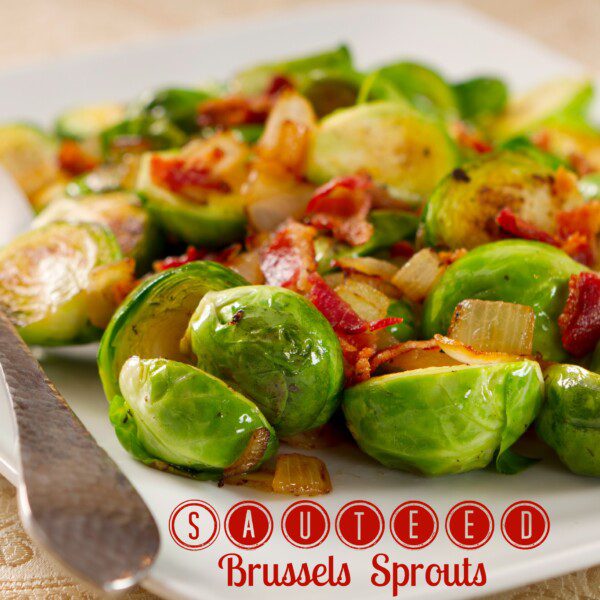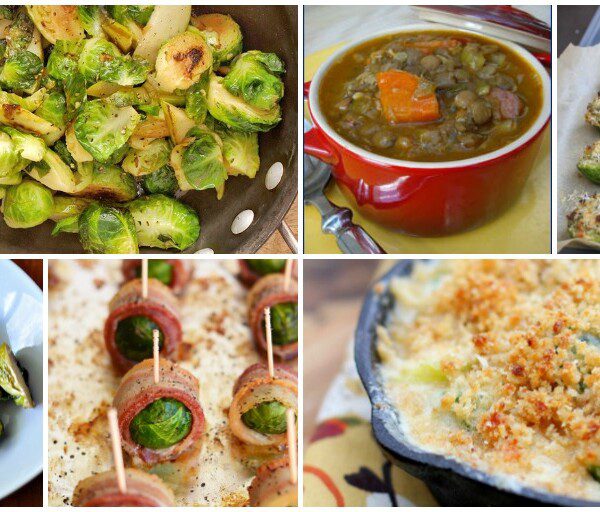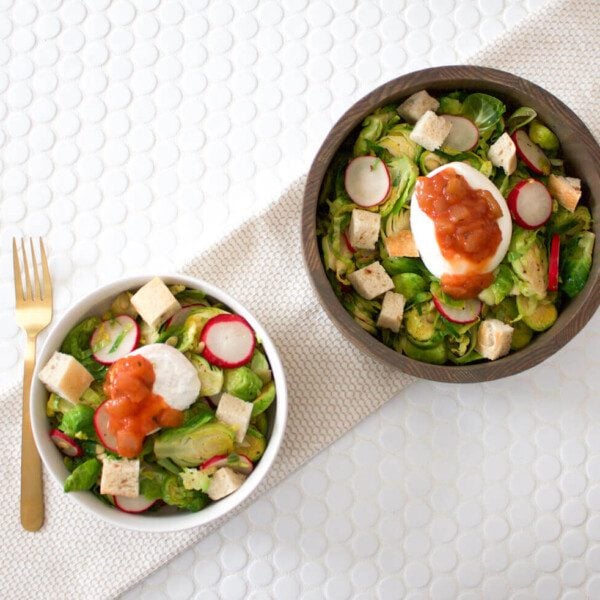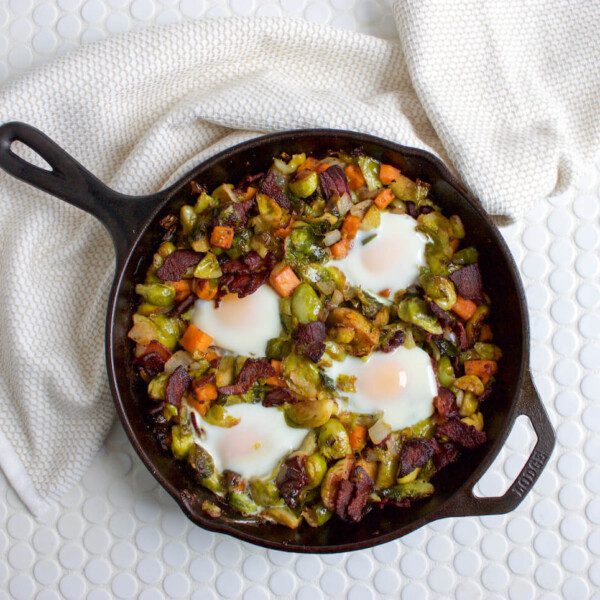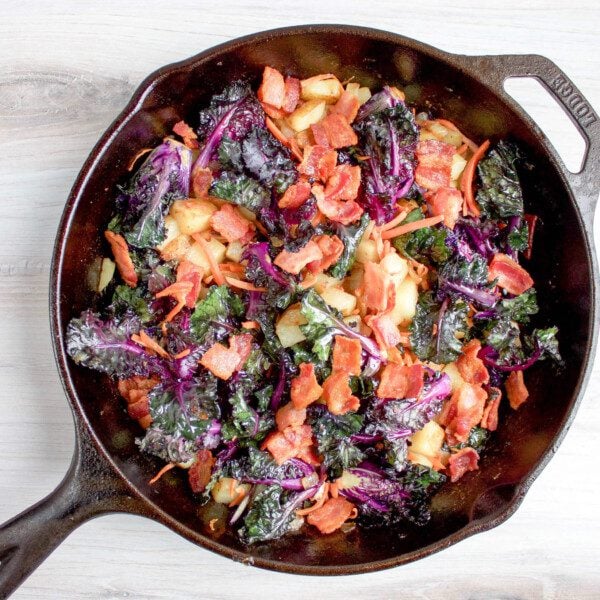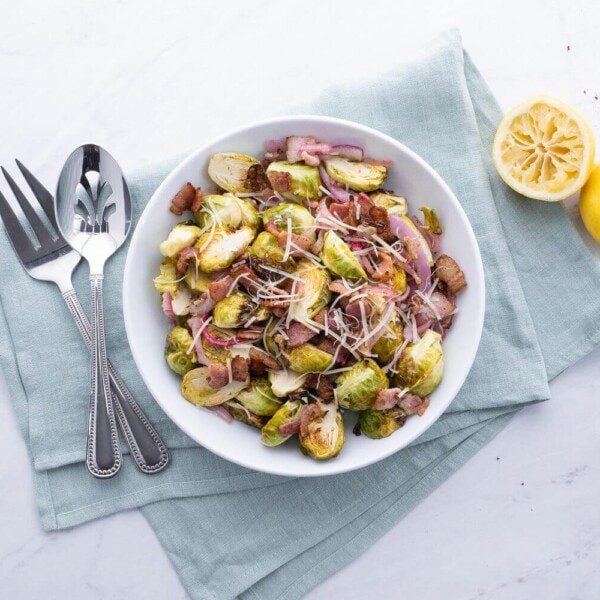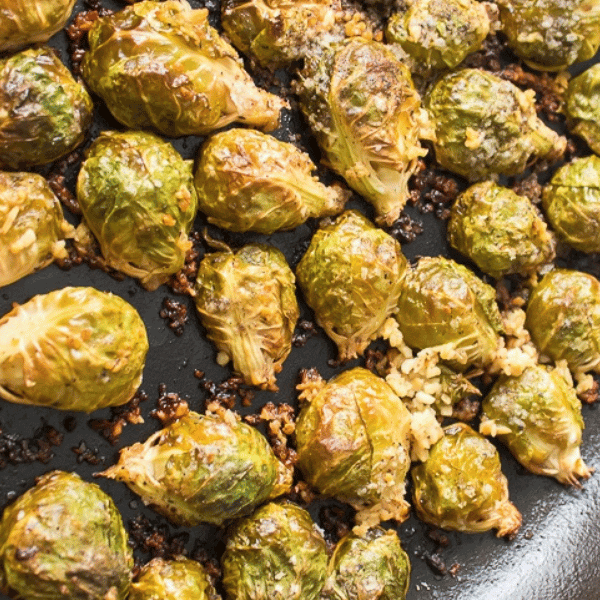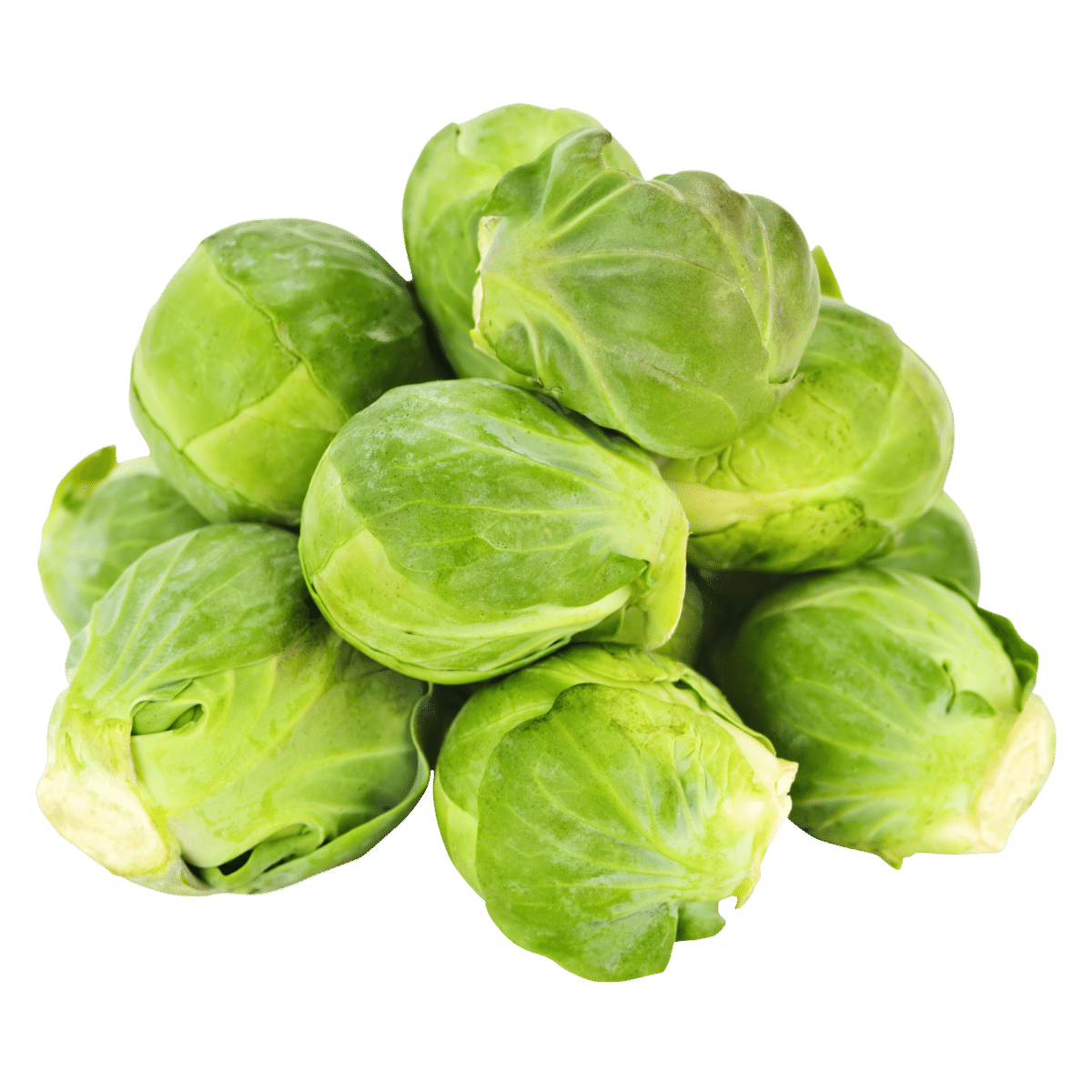
How to Select Brussels Sprouts
- How To Select Loose Brussels Sprouts
- Select sprouts with compact leaves that are tightly layered together.
- They should be firm when you squeeze them.
- Some yellow out leaves are okay but generally, they should be green in color. Avoid shriveled sprouts or sprouts with holes in the leaves.
- The stem end should be dry but not brown or moldy.
- Small sprouts (1 to 1 1/2 inches in diameter) will be sweeter. Larger sprouts will have a more cabbage-like taste.
- How To Select Brussels Sprouts On TheStalk
- Select stalks with sprouts that have tightly layered leaves.
- Avoid stalks with wrinkled sprouts or those with holes in their leaves.
- Examine stalks for mold or dampness and avoid if found.
When are Brussels Sprouts in Season?
While you can find brussels sprouts at your grocery store year-round, the peak season to enjoy brussels sprouts is from late August through March. When picking brussels sprouts, you want to look for tight layers of green leaves, and the sprouts should be firm. Small one-inch sprouts are also sweeter and more tender than larger brussels sprouts.
Varieties of Brussels Sprouts
There are 110 varieties of brussels sprouts, but we will focus on the most popular:
- Catskill: One of the most popular Brussels sprouts, Catskill are large Brussels sprouts that have a rich, sweet flavor.
- Diablo: A longer-growing season sprout, the Diablo Brussels sprouts are medium size and have a rich nutty flavor.
- Green Gems: A smaller variety that has a sweet and nutty flavor. The leaves of the sprouts are very tender and delicious to eat.
- Jade Cross: A high-yielding brussel sprout, the Jade Cross sprouts are tiny, typically a half inch in diameter. These sprouts last long and don’t wither or lose their flavor, so they are great for freezing.
- Long Island Improved: An upgraded version of the Long Island brussel sprout that is hardier to frost and cold, giving it a nuttier flavor and sweet leaves.
- Octia: A hybrid sprout made for a shorter growing season, Octia sprouts are small with high growing yields and fantastic sweet flavor.
- Redarling: A hybrid sprout that has purple hues and a long growing season.
- Mighty: Small sprouts that are an inch or less in size with a nice green color and a nutty, bold flavor.
Brussels Sprouts Nutrition Facts & Benefits
A nutrient-rich vegetable, brussels sprouts have many health benefits:
Nutritional Facts
Serving size: 1 cup
Approximate 38 calories
- 0.3 grams of fat
- 3 grams of protein
- 8 grams of carbohydrates
- 1.9 grams of natural sugar
- 3.3 grams of fiber
Health Benefits
A few key health benefits of brussels sprouts::
- Brussels sprouts are high-fiber veggies that can improve gut health and help with regularity.
- Brussels sprouts contain antioxidant compounds that protect against free radicals and reduce cancer risk.
- Cruciferous vegetables, such as brussels sprouts, can help decrease the risk of diabetes.
Brussels sprouts are some of the best vegetable sources of Vitamin C.
How to Store Brussels Sprouts
How To Store Brussels Sprouts: Before storing, remove any loose or damaged leaves but do not wash or trim. If sprouts are still on the stalk, leave them intact until you are ready to use them. Store in a plastic bag or air-tight container in the crisper drawer of your refrigerator. Brussels sprouts can last up to two weeks in the refrigerator but are best when eaten within a few days.
How To Freeze Brussels Sprouts: Wash and trim the sprouts and blanch for three to five minutes, depending on their size. Remove from boiling water and immediately cool them in an ice bath. Drain and let the sprouts dry completely. Once dry, flash freeze them for about an hour on a cookie sheet. Then, transfer them into a freezer bag and freeze them for up to a year.
How to Prepare Brussels Sprouts
When storing your brussels sprouts, don’t wash the sprouts until you are ready to eat. Keep them fresh in your fridge. How to prepare brussels sprouts::
- Blanched: Add the Brussels sprouts to a pot of boiling water for one minute, then remove and eat.
- Sauteed: Rinse the Brussels sprouts and then chop them in half or quarters. Add olive oil to your pan, and toss the broccoli rabe into the pan. Season your Brussels sprouts with salt and pepper to taste. Cook over medium heat until desired tenderness.
- Roasted: Cut sprouts in half. Preheat your oven to 400 degrees. You can drizzle the Brussels sprouts in olive oil, salt, and pepper. Then place the sprouts on a cooking sheet and bake for 17 to 20 minutes.
